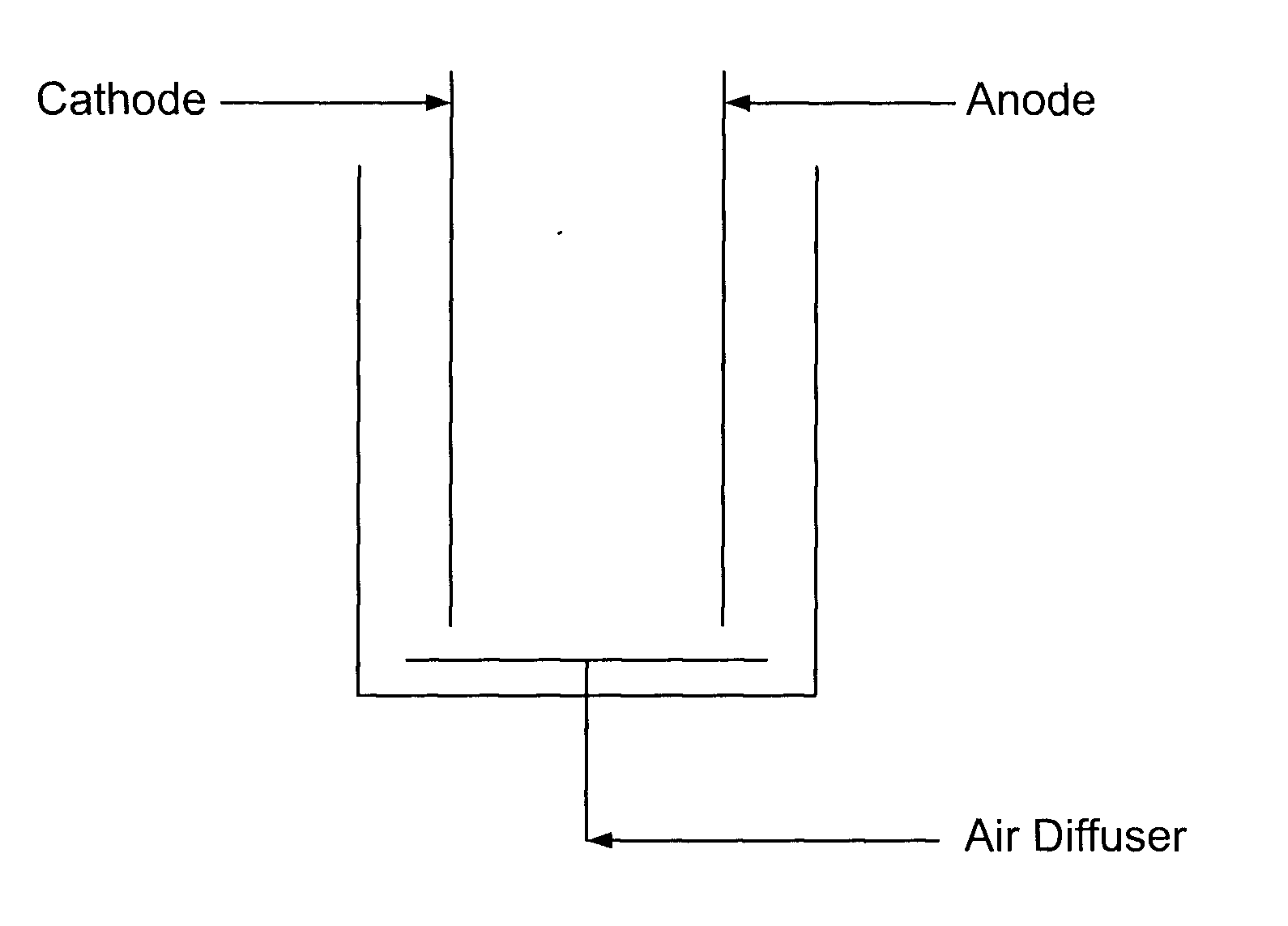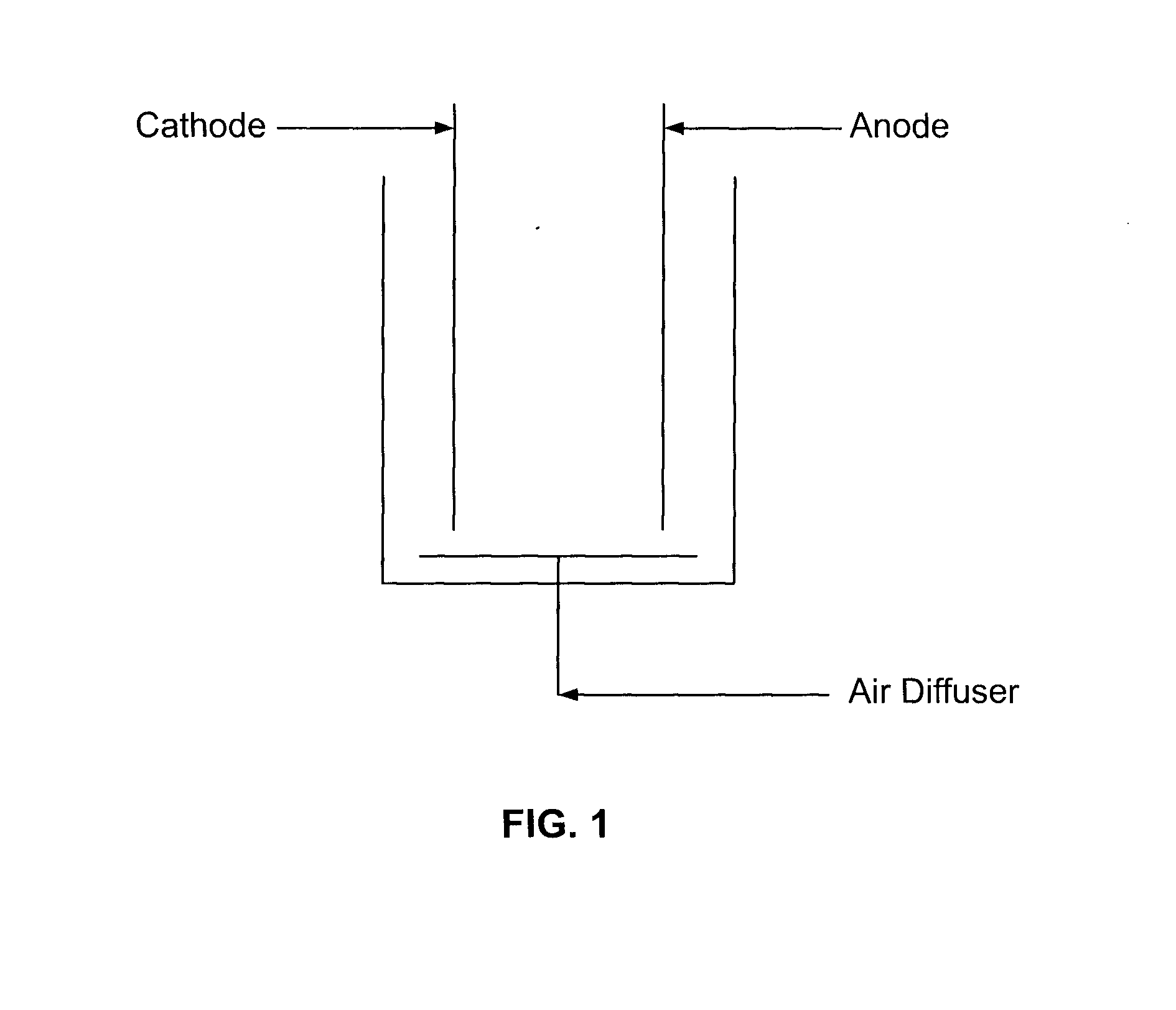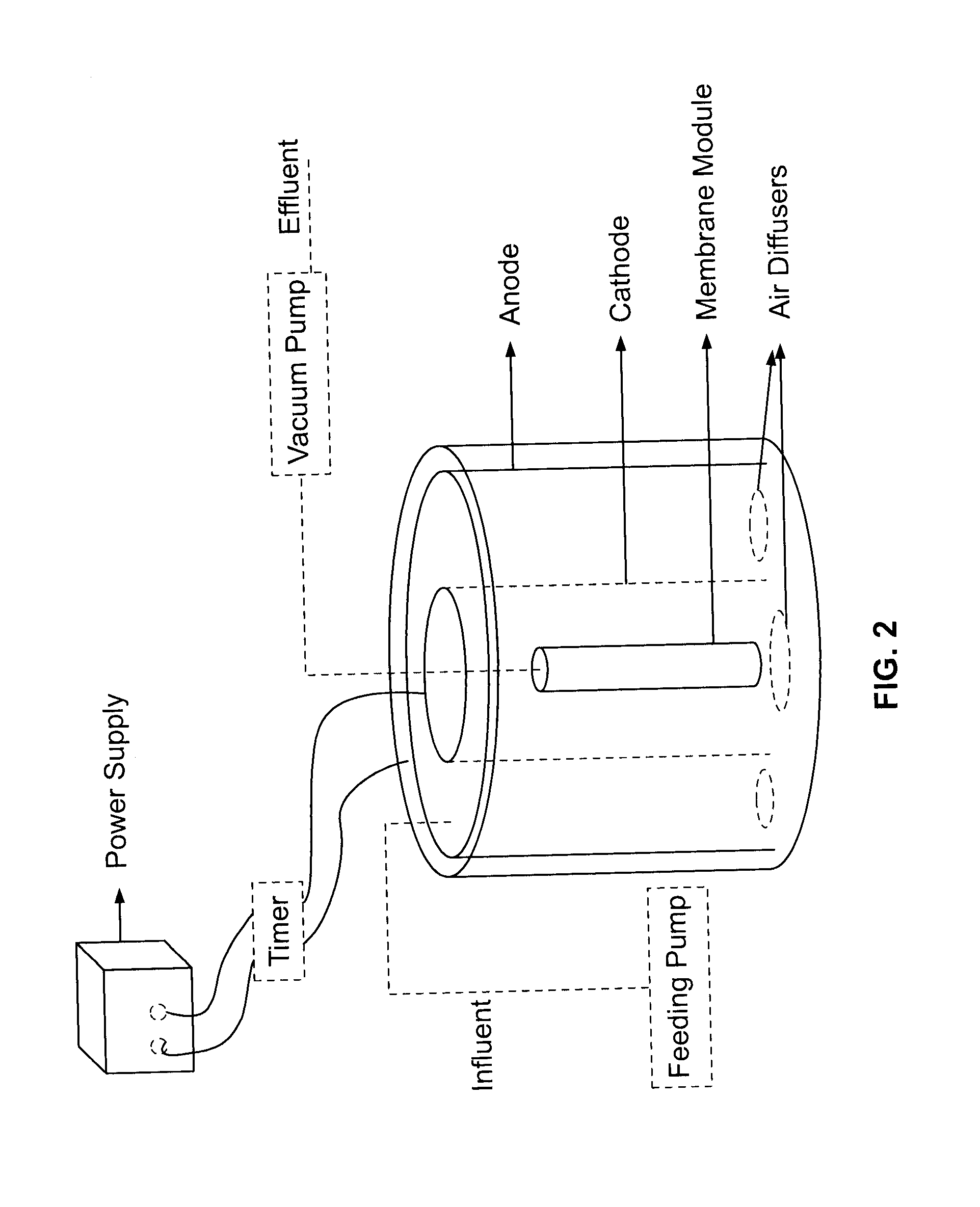Processes and apparatuses for removal of carbon, phosphorus and nitrogen
a technology of carbon, phosphorus and nitrogen, applied in the direction of biological water/sewage treatment, sustainable biological treatment, treatment water, etc., can solve the problems of challenging to eliminate all these nutrients in one reactor, environmental hazards of wastewater treatment plants, etc., to reduce additional infrastructure related costs, improve the performance and effluent quality, and reduce the effect of energy consumption
- Summary
- Abstract
- Description
- Claims
- Application Information
AI Technical Summary
Benefits of technology
Problems solved by technology
Method used
Image
Examples
example 1
[0079]In this experiment, one submerged membrane electro-bioreactor SMEBR (FIG. 2) and one submerged membrane bioreactor (MBR) without electrical field to serve as a control were operated simultaneously. They were fed with the same mixture comprising synthetic wastewater and activated sludge and run at the same operating conditions to create perfect comparing conditions. SMEBR outer body was composed of a cylindrical polyethylene container (20 L). The design is adequate to patented SMEBR system (Elektorowicz et al., 2009). In the middle of this reactor, a hollow fiber ultrafiltration membrane module was placed vertically. Air diffusers were inserted on top and below the membrane to provide air intensity enough to mitigate fouling on the membrane surface. Two cylindrical perforated electrodes (aluminum anode and stainless steel cathode) were placed around the membrane as demonstrated in FIG. 2. Direct current power supply connected with an electrical timer was applied to provide the ...
example 2
[0092]Further tests have been made for simultaneously removing of carbon, phosphorous and nitrogen in a rectangular electro-bioreactor. The lab scale tests were carried out in rectangular 15 L reactor where three modules hollow fiber membranes were installed after two pairs of electrodes submerged in wastewater. Both aluminum anodes and stainless steel cathodes were perforated to permit on free flow throughout from point of wastewater supply towards membranes. Applied CD was less than 15 A / m2 and a ratio of electrical zone to total volume of the electro-bioreactor was no more than of 0.4. The continuous flow reactor was fed with synthetic wastewater inoculated with activated sludge sampled at wastewater treatment plant. The influent of synthetic wastewater contained COD at the range of 892-999 mg / L as well as 16.8-17.4 mg NH3—N / L, 0.23-0.24 mg NO3—N / L and 15.3-22.1 mg PO4 / L.
[0093]The reactor has run for 5 months at a constant flow of 45 L / d and SRT of 15 days. The system was able to...
example 3
[0094]Further tests have been made in order to verify the possibility of removing metals by using a process similar to the process of Example 1 using a SMEBR. A PVC cylindrical reactor (235 L), two cylindrical electrodes connected to a low DC power supply (intermittent supply of electrical field), and a hollow fiber microfiltration membrane (MUNC-600A, Microza, Asahi Kasei Chem. Corp., Japan) were used (see FIG. 2). The membrane had an effective surface area of 12.5 m2, a pore size of 0.1 μm, and the module was equipped with a built-in bottom air diffuser for scouring. Several fine bubble air diffusers were also placed at the bottom of the reactor to supply the oxygen required for both mixing and microbial activity. SMEBR was continuously fed with pre-screened raw municipal wastewater containing metals (see Tables 2 and 3) redirected from the influent channel at a flow rate of 550 L / d for 7 weeks. SRT and HRT were 10 d and 11 h, respectively. SMEBR operated under constant current de...
PUM
 Login to View More
Login to View More Abstract
Description
Claims
Application Information
 Login to View More
Login to View More - R&D
- Intellectual Property
- Life Sciences
- Materials
- Tech Scout
- Unparalleled Data Quality
- Higher Quality Content
- 60% Fewer Hallucinations
Browse by: Latest US Patents, China's latest patents, Technical Efficacy Thesaurus, Application Domain, Technology Topic, Popular Technical Reports.
© 2025 PatSnap. All rights reserved.Legal|Privacy policy|Modern Slavery Act Transparency Statement|Sitemap|About US| Contact US: help@patsnap.com



